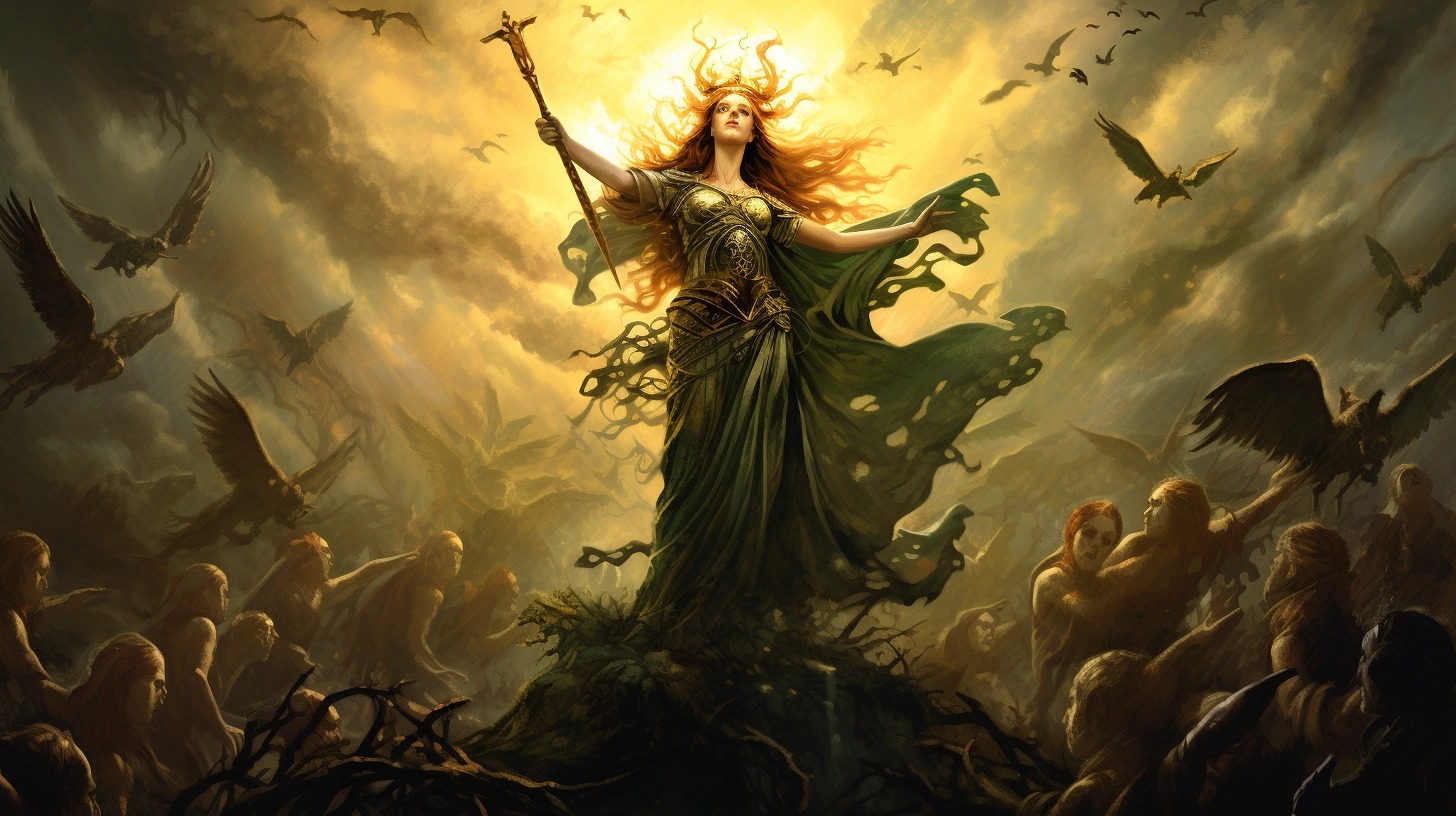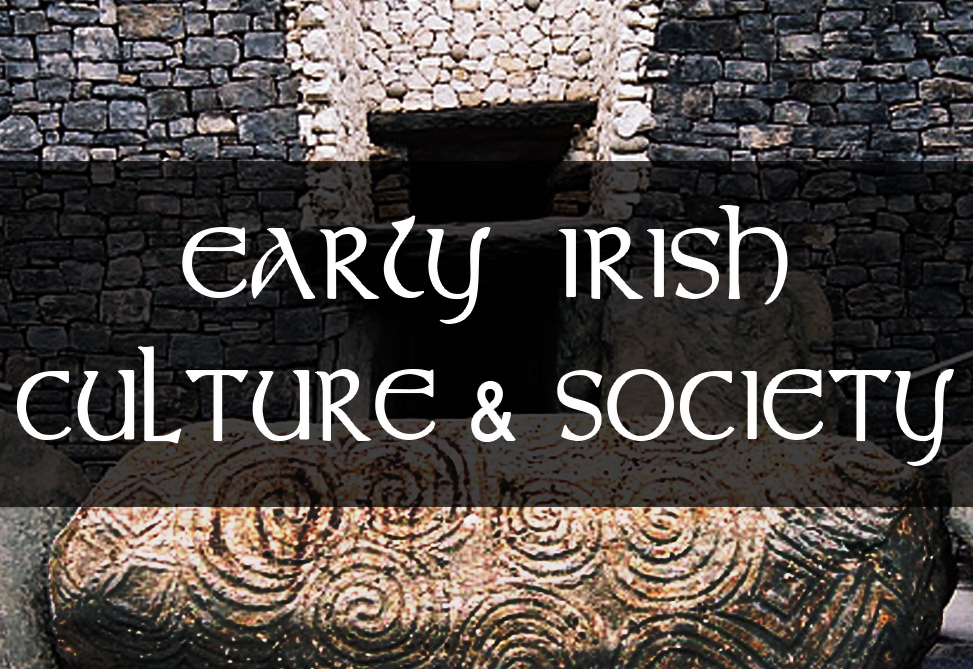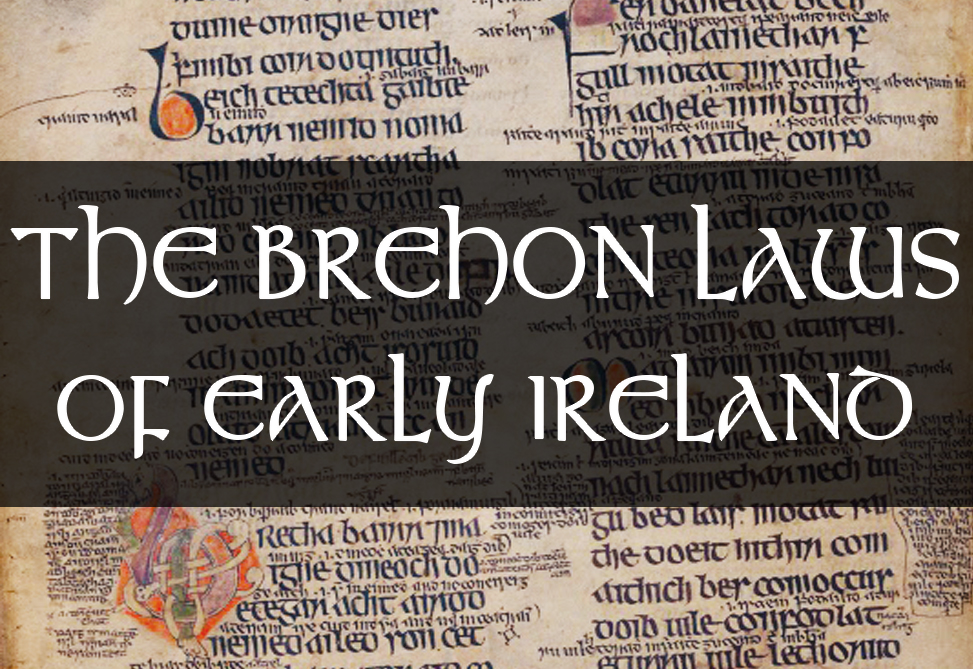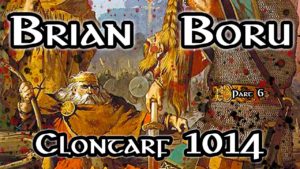Macha was daughter of Aedh Ruadh (Ayrooa), or Red Hugh, who was at this time in an agreement to share the sovereignty of Ireland in rotation every seven-years with another two kings named Kimbay (Cimbaoth) and Dithorba (Dihorba)–a pact that was witnessed by seven druids, seven poets, and seven champions. Under this arrangement Ireland knew just and good governance for a period of sixty-three years.
Everything was working well for the three kings until Red Hugh drowned near Ballyshannon at a place that is still called Assaroe, or Eas Ruaidh, in his honour to this day. He died during the first year of a new seven-year cycle of his rule. His only child and heir, Macha, a woman, claimed the right to continue the term of her father’s kingship according to the arrangement. Kimbay and Dithorba flatly refused to give a woman any share in the rulership of Ireland, so Macha raised an army among her friends and father’s supporters, defeated both the kings in battle and secured the sovereignty of Ireland for herself by conquest.
Dithorba subsequently died in a battle leaving his five sons–who came to claim the sovereignty of Ireland in his place. Macha rejected their claim on the basis that her right to the sovereignty of Ireland no longer came from the pact but was instead secured to her by right of battle. The five sons of Dithorba raised an army in rebellion against Macha but were savagely defeated and forced to retreat into hiding.
Macha married Kimbay and agreed to serve alongside him as co-sovereign for a further seven years. Her power was firmly consolidated, but she could not rest knowing the sons of Dithorba were still out there somewhere. So she left her throne to pursue the rebel sons of Dithorba alone into their wilderness hideout. Macha tracks down the brother’s camp and, cunningly disguising herself as a haggard old woman, she secures a place by their fire.
Sensing her feminine beauty beyond her disguise–though still being deceived by it–each of the brothers attempt to carry Macha away to assault her, but as soon as they are alone Macha beats and subdues each of them in turn. Macha marches the brothers in chains to the site that would become the great palace of Emain Macha. Her people gathered and her advisors called for the rebels to be executed; but Macha nobly decides not to kill the brothers
“because it would be the defilement of the righteousness of a sovereign in me; but they shall be condemned to slavery, and shall raise a rath around me, and it shall be the chief city of Ulster for ever.”
P.W. Joyce Irish names of places Vol. 1 (1869), p.90.
Using her brooch to mark a boundary, she traced the dawn of the kingdom of Ulster in the soil and commanded the brothers to dig. The site continued as a royal residence of Ulster kings for more than six centuries and reached its height around the 1st-century A.D. in the reign of Conchobhar MacNessa (Connor MacNessa) and his remarkable Red Branch Knights who trained here.

On the basis of Macha the Red’s story the name Emhain Macha derives from ‘an eómhuin Macha’, and means ‘Macha’s neck-brooch’ (from eó, meaning ‘brooch’, and muin, meaning ‘neck’). While women are held in high regard throughout the Irish sagas, afforded a comparatively respectable status under the native Brehon laws, and remained a powerful force throughout history, it is extremely rare to find any references to women securing the sovereignty of Ireland for themselves.
Macha the Red stands out as an exceptional figure for this reason.






